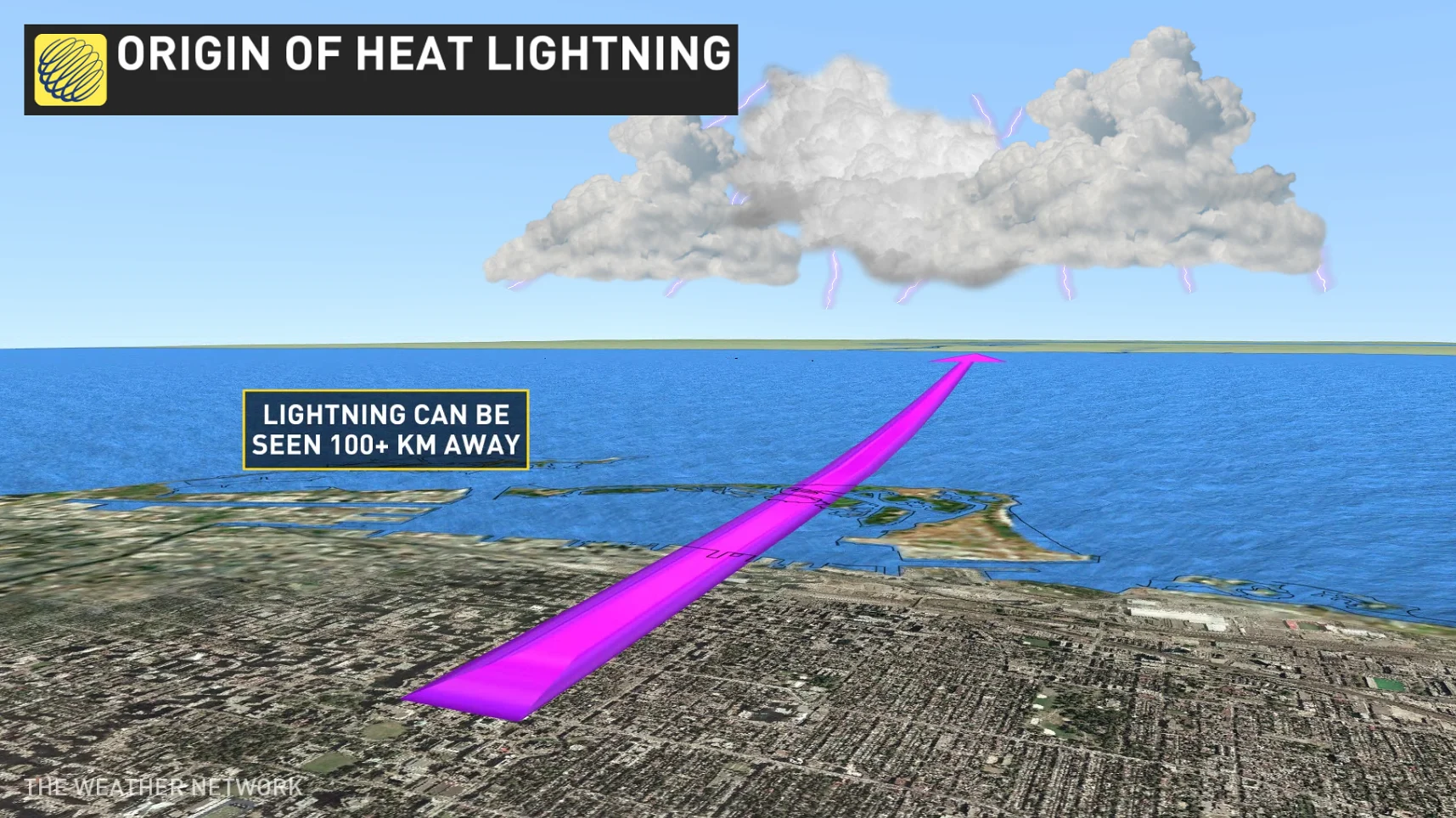
'Heat lightning' is summer’s peaceful and misunderstood secret
The mesmerizing flashes of light that illuminate the horizon on a sultry summer evening are less mysterious than they seem.
We’re coming up on the best time of year: porch season.
Porch season, patio season, sit-outside-and-enjoy-it-season. Call it whatever you want, but it’s one of life’s simplest enjoyments to sit outside on a summer evening while you soak in the warm breeze, listening to the crickets chirp while the leaves gently rustle around you.
The only thing that could make those peaceful nights even more enjoyable is the serene strobe of lightning in the distance. Many folks know this as “heat lightning,” and it’s less mysterious than its legend leads us to believe.
HEAT LIGHTNING: MYTH OR MISNOMER?
Heat lightning is a phrase that takes on a life of its own in the summertime.
Many decades ago, long before we had much modern knowledge of meteorology, folks would gaze upon the horizon on a steamy summer evening to see the sky light up with a relentless barrage of silent lightning flashes.
Lacking weather radar, and watching these vivid flashes without hearing any thunder, folks came up with theories on why these enchanting flickers danced in the distance.
SEE ALSO: Beat the heat, sun, and summer storms with these things
The most prevalent theory held that this mystical lightning was a natural discharge of the hot, humid air, giving rise to the myth of “heat lightning.”

We know different nowadays. Heat lightning as a phenomenon simply doesn’t exist. Lightning is a static discharge created by positive and negative charges within a cumulonimbus cloud.
What we call heat lightning is just lightning created by thunderstorms far off in the distance, too far away to hear any thunder associated with each bolt we see.
Under the right conditions, including good visibility and tall thunderstorm clouds, lightning is visible for more than a hundred kilometres in the distance. Someone in Calgary with a clear view of the horizon could look north and see flashes of lightning from a vigorous storm near Edmonton, more than 200 kilometres away.
WATCH: LIGHTNING IS THE SINGLE BIGGEST DANGER IN STORMS
DON'T MISS: Get to know the weather terms you'll be hearing about this summer
LOOK OUT FOR BOLTS FROM THE BLUE
It’s soothing to watch a storm far in the distance while you bask in the comfort of a summer night. But it’s important to remember that even faraway thunderstorms can pose a threat to your safety.
While the phrase “heat lightning” stems from a false belief, a “bolt from the blue” is a true and serious threat.
Lightning can strike dozens of kilometres away from a thunderstorm, particularly when it’s a robust thunderstorm that’s thriving on the instability of a steamy day. There are countless cases of people who were injured or killed by lightning thrown off by distant thunderstorms.
A general rule of thumb is that you’re close enough to get struck by lightning if you can hear thunder, even if the skies are clear where you are. You’re generally safe to watch the flashes of a faraway storm, but remain mindful of your safety if the storm is close enough to make out the individual bolts of lightning.
Thumbnail courtesy of Unsplash.











